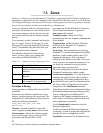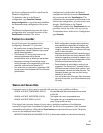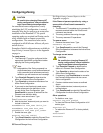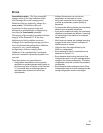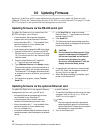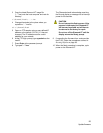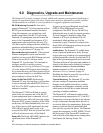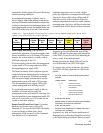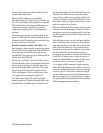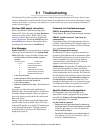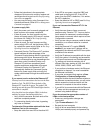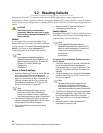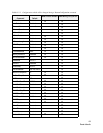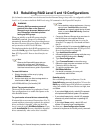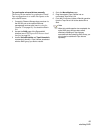59 Diamond Storage Array
an error code, please provide both the first and
second blink code values.
During a fault condition, more detailed
information about the fault may be available via
the CLI or the ExpressNAV interface over the RS-
232 interface port or the optional Ethernet port.
These error messages should be reported to
technical personnel to assist in debugging the
problem.
The blink codes are also saved internally by the
array to NVRAM (Non Volatile Random Access
Memory) and will be displayed at power up if the
power to the array is recycled.
Disk Drive Activity and Disk Fault LEDs
Each
dual disk drive sled assembly contains two green
activity LEDs and an amber disk fault LED. Once
the system has successfully powered up and
passed POST, the green activity LEDs are full on
and the disk fault LED off.
The Drive 1 and Drive 2 activity LEDs will stay
full on when the system is operational and no disk
drive activity is present. As the disk drives are
accessed, the green LEDs will flash. If the disk
drives are heavily accessed the green activity
LEDs will appear to flash at a high rate or may
even appear to be completely turned off.
The amber disk fault LED will be off under
normal operation. If either of the disk drives on a
dual disk drive assembly reports a disk error of
any kind, the amber disk fault LED will come on.
The disk fault LED can be activated by minor
issues such as a disk drive writing to a bad sector
(which is usually corrected by the disk drive the
next time it writes) or major issues such as a head
crash or complete drive failure.
When the disk fault LED is turned on, the system
will issue a detailed message via the CLI. These
messages are not written permanently to the error
log file but should be recorded to help assess the
disk problem.
If the disk drive error is a non fatal error and the
drive is still functional, the array will continue to
read and write data to the disk drive but the disk
fault LED will remain on. If you repeat a drive
command or action and it completes successfully,
the disk fault LED may have been set by an
anomaly in the disk drive. You can clear the Disk
Fault LED by either power cycling the array or
issuing the
SledFaultLED
command in CLI as per
Maintenance Services Commands
on page 38
If you repeat a disk command or action and the
disk fault LED remains on, the disk error may be
serious. You should write down the error message
issued by the CLI and contact technical support
via the means easiest for you for assistance (see
Warranty
on page A-xv). If you choose to replace
the suspected faulty dual disk drive sled assembly,
follow the appropriate procedures.



